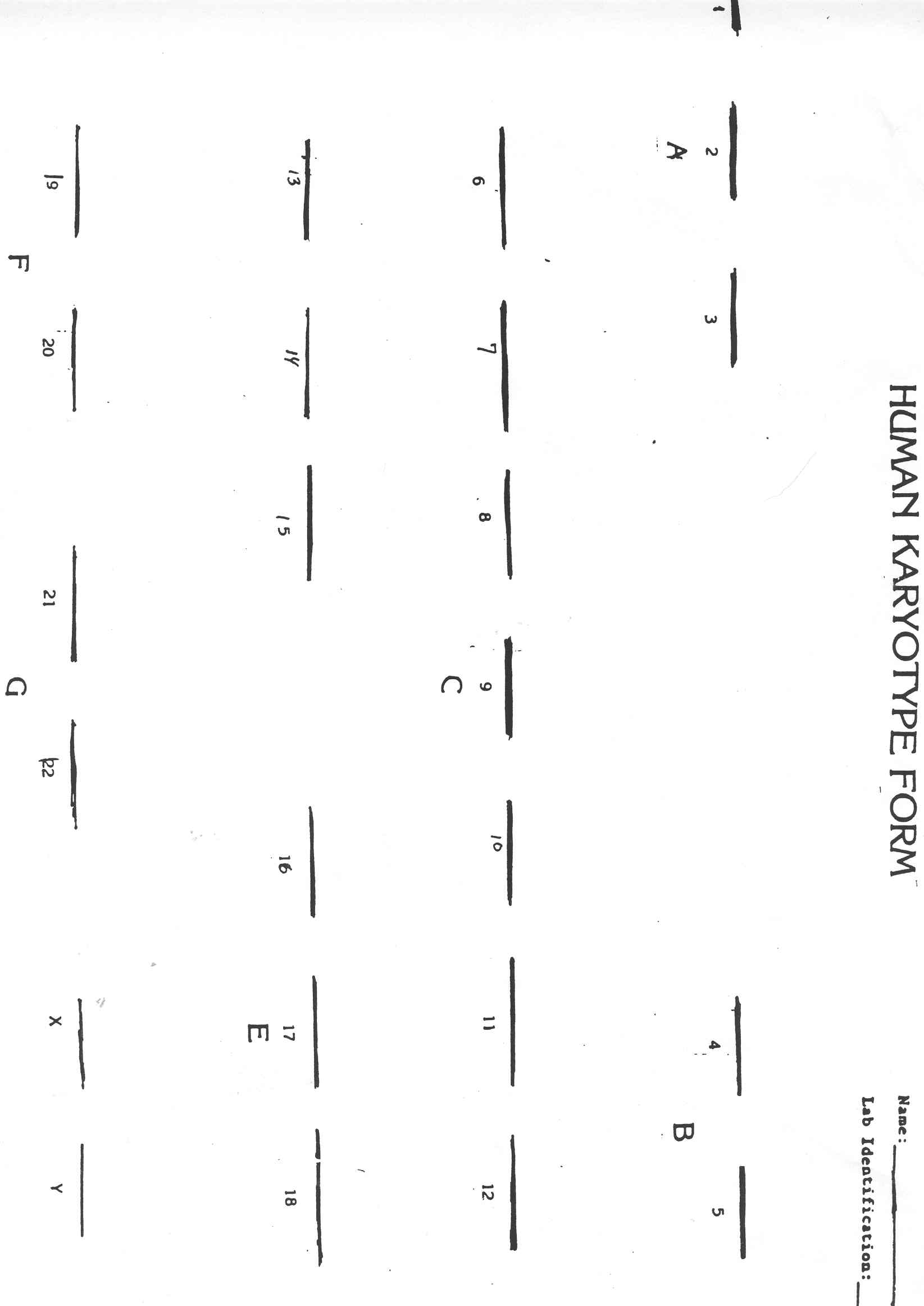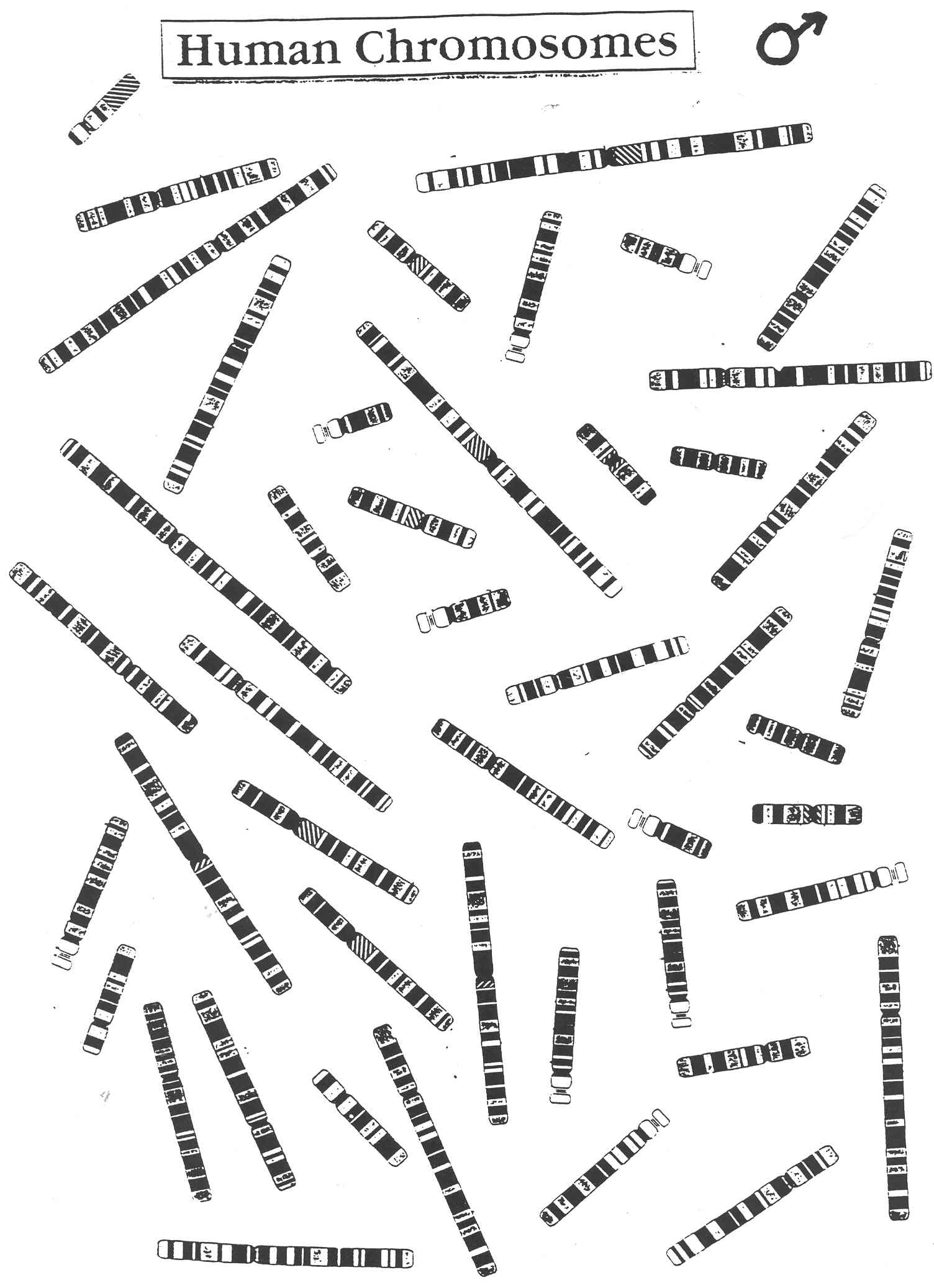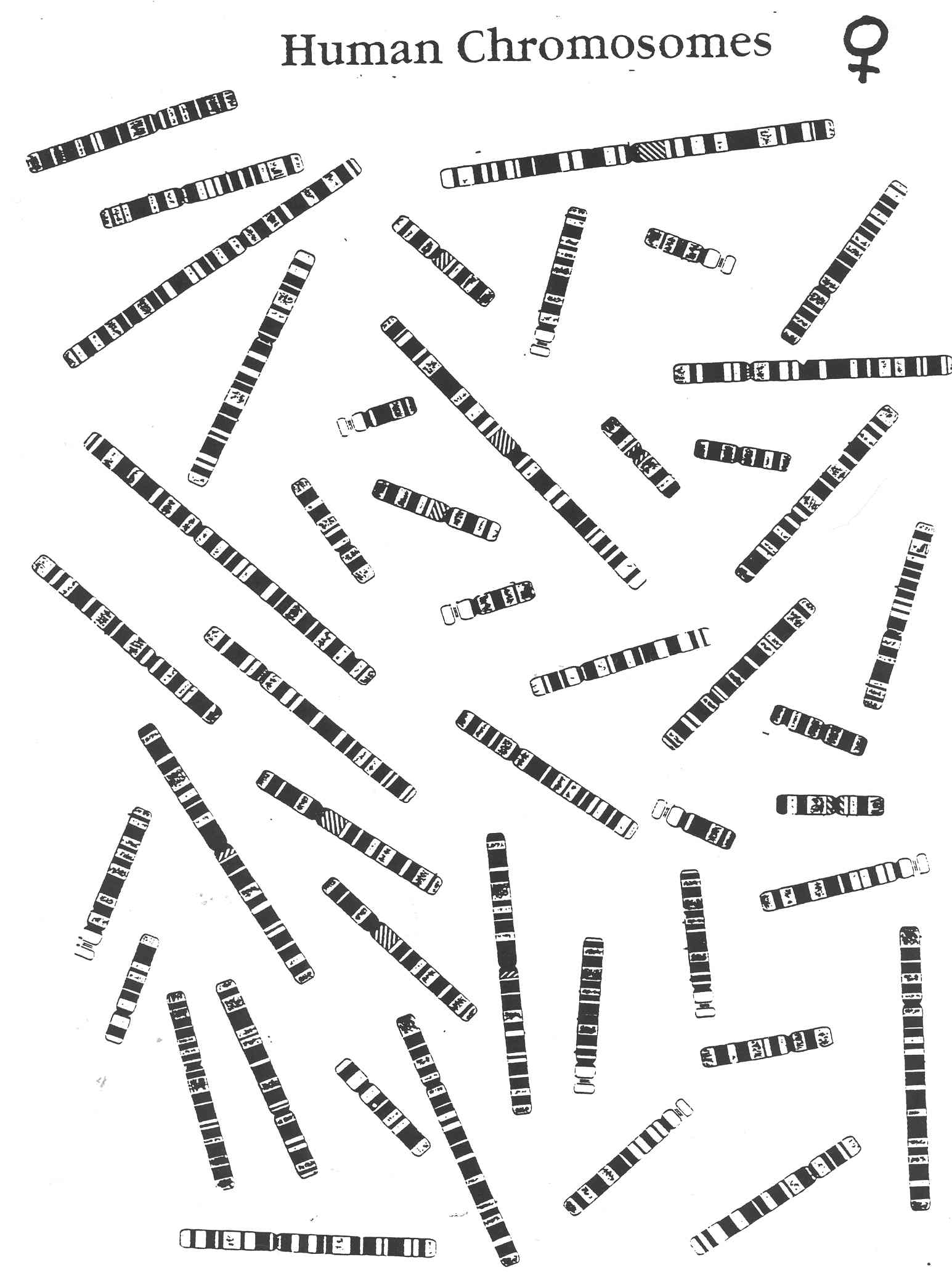
In
1961 an international meeting was held at the University of Colorado Medical
School in Denver, Colorado to standardize the format for a normal human
karyotype. The format that evolved is known as the "Denver System."
Each
chromosome has its own individuality as shown by its size, shape, and position
of its kinetochore. Using the "Denver System," the chromosomes are put
into similar groups designated by letters. Then numbers are used to subdivide
the chromosomes within the groups designated by numbers based on the position of
the kinetochore and the length of
The
student will obtain a normal male or female karyotype. Next, using scissors,
carefully cut out the individual chromosomes and arrange them on a blank
karyotype form with the kinetochore on the
dotted line using the Denver System Table and the sample karyotype as a
guide. It is much easier if done in the following order-group A, group B, group
D, group F, group G, group E, and group C last. Attach chromosomes to the
karyotype form as directed.
After
the normal karyotype is completed the student will be given an abnormal
karyotype. First, count the number of
chromosomes on the sheet of paper. There will be either 45, 46, or 47
chromosomes. Knowing the number of chromosomes will be a big help in identifying
the unknown karyotype.
Using scissors, cut out the
chromosomes and arrange them on a blank karyotype form with the kinetochore on the dotted line using the Denver System. It is much
easier if done in the following order-group A, group B, group D, group F, group
G, group E, and group C last. Attach chromosomes to the karyotype form as
directed
|
|
|
Denver System Table |
|
|
|
HUMAN
KARYOTYPE |
|
Group
Chromosome |
Number |
|
|
A |
1 |
Longest with
median kinetochore. |
|
|
2 |
Second longest, kinetochore slightly
off center. |
|
|
3 |
Third longest with median kinetochore. |
|
B |
4-5 |
Four long chromosomes with kinetochore
close to one end. |
|
C |
6-12 |
Fourteen
medium length chromosomes with slightly sub-median |
|
D |
13-15 |
kinetochores. Six
chromosomes slightly smaller than the C group with the kinetochores in a near terminal position. |
|
E |
16-18 |
Six
chromosomes; short with median kinetochores in 16 and submedian in 17
and 18. |
|
F |
19-20 |
Four chromosomes, shorter than E group
with median kinetochores. |
|
G |
21-22 |
Four shortest
chromosomes with sub-median kinetochores. It is difficult to see any
short arms. |
|
X |
23 |
Similar to C group but often the largest
in this group. |
|
Y |
|
Similar to G
group but the chromatids tend to remain close together. |
|
|
|
|
A LISTING OF SOME OF THE KARYOTYPES USED AS UNKNOWNS
45 CHROMOSOMES
14/21
Translocation Carrier. A 14 chromosome and a 21 chromosome will appear to be
missing and there will seem to be an extra C. This is because one of the 21
chromosomes is attached to the short arm of one of the 14 chromosomes. Put the
14/21 chromosome with pair number 14 of the D group.
21/21
Translocation Carrier. The two 21 chromosomes will appear to be missing and
there will seem to be an extra F chromosome. This is because the two 21
chromosomes are attached to each other at their kinetochores. Put this
attachment on the 21 space of the karyotype form.
Turner's
Syndrome. One of the X chromosomes is missing.
14/21
Translocation Down Syndrome. A 14 chromosome will appear to be missing because
a 21 chromosome is attached to the short arm of a 14 chromosome. Put the 14/21
chromosome with the D group.
21/21 Translocation Down Syndrome. One of the 21 chromosomes will appear to be missing because a 21 chromosome is attached to the sub median kinetochore of a 21 chromosome. Put this chromosome in the space of the missing 21 chromosome.
5 B Deletion (Cat Cry Syndrome). The karyotype will appear to be normal except one of the 5 B chromosomes will have lost part of its short arm.
47
CHROMOSOMES
XYY (Super Male). Place this extra Y chromosome with the other Y chromosome. XXY (Klinefelter). Place the extra X chromosome with the other X chromosome. XXX (Super Female). Place the extra X chromosome with the other X chromosomes. 21/21/21 (G Trisomy). Place the three 21 chromosomes together.
Questions to Ponder…..
1.
Give a brief description of the two techniques for obtaining a human chromosome
smear.
2. Name the two characteristics of chromosomes that determine how they will be
grouped.
3. Trisomy of a large chromosome is usually lethal. Name one exception (not G
trisomy).
4. Give a brief description of the abnormality you were given. Describe the
mental and physical conditions of an individual with this karyotype.
This is your Key to figure out the other chromosomes

This
is your answer sheet to put the chromosomes
on...in order

Choose a Male or Female to cut out
Male

Female
